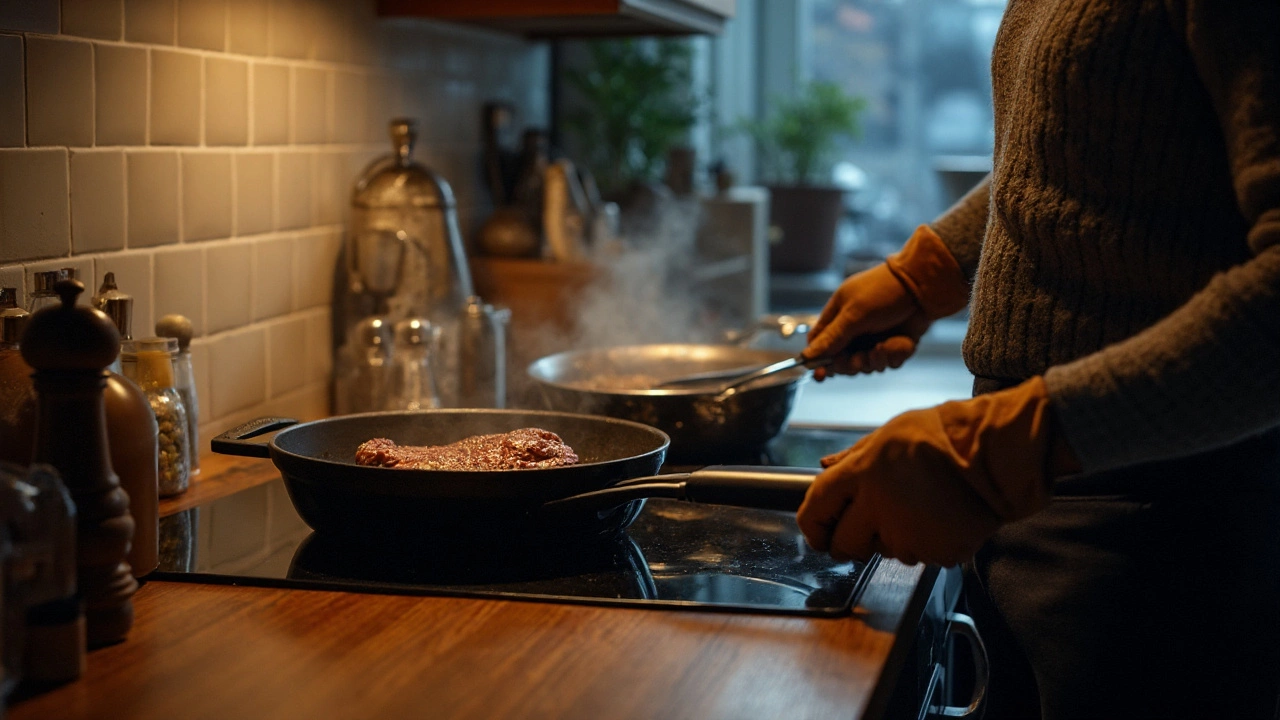Cast Iron Cookware: The Basics and Benefits
If you’ve ever stared at a heavy black pan in the kitchen and wondered if it’s worth the effort, you’re not alone. Cast iron may look tough, but it’s actually one of the most forgiving tools you can own. It heats evenly, holds heat for a long time, and gets better with every use. That means you can get a perfect sear on steak, bake buttery cornbread, or stir‑fry veggies without hot spots.
Another plus is durability. A good cast‑iron pan can last generations if you treat it right. It doesn’t warp, it won’t crack in the dishwasher (because you don’t use one), and it’s cheap compared with high‑end stainless steel. For anyone who wants a reliable piece of cookware without breaking the bank, cast iron checks all the boxes.
How to Season and Maintain Your Cast Iron
Seasoning is just coating the pan with a thin layer of oil and heating it until the oil polymerizes. This creates a natural, non‑stick surface that also protects the metal from rust. To start, wash the pan with warm water and a gentle scrub, then dry it completely. Rub a teaspoon of neutral oil—vegetable, canola, or flaxseed—over the entire surface, inside and out.
Place the pan upside‑down in a preheated oven at 400°F (200°C) and bake for an hour. Put a foil tray below to catch drips. After it cools, wipe away any excess oil. You’ll see a dark, glossy finish—that’s your seasoning.
Going forward, avoid soap unless you’re planning to strip the seasoning. Instead, rinse with hot water and use a brush or a sponge. If food sticks, add a little oil and re‑heat; the pan will often release the stuck bits on its own. When you notice dull spots or rust, repeat the seasoning process. It’s quick, and the pan gets better each time.
Best Cast Iron Recipes for Everyday
Here are three simple dishes that let the pan shine:
- Pan‑Seared Steak: Pat the steak dry, season with salt and pepper, and heat the pan until it’s smoking hot. Add a splash of oil, then the steak. Cook 4‑5 minutes each side for medium‑rare. Let it rest, and you’ve got a restaurant‑quality piece.
- One‑Pan Chicken & Veggies: Toss chicken thighs, chopped potatoes, carrots, and onions with olive oil, salt, and herbs. Spread them in the pan, skin side down, and bake at 425°F (220°C) for 35‑40 minutes. The cast iron gives a crispy skin and caramelized veggies.
- Breakfast Skillet: Sauté diced bell peppers and onions, add sliced mushrooms, then crack a few eggs on top. Cover briefly until the whites set. Serve with toast for a hearty start.
These recipes need minimal prep, but they showcase the pan’s heat retention and even cooking. Feel free to experiment—cast iron works for baking pies, roasting pizzas, and even grilling sandwiches.
Bottom line: a cast‑iron pan isn’t just a heavy piece of metal; it’s a versatile kitchen partner. Season it once, keep it clean, and use it often. Soon you’ll wonder how you ever cooked without it.
Cast iron or stainless steel? Clear, evidence-backed guide to pick the right pan for searing, sauces, eggs, and everyday cooking-plus care, safety, and buying tips.
Sep, 5 2025
